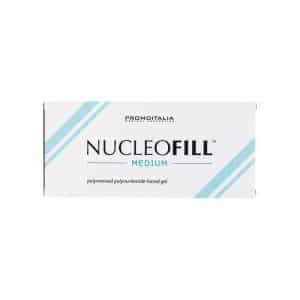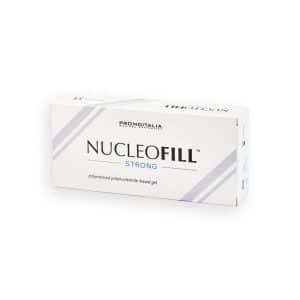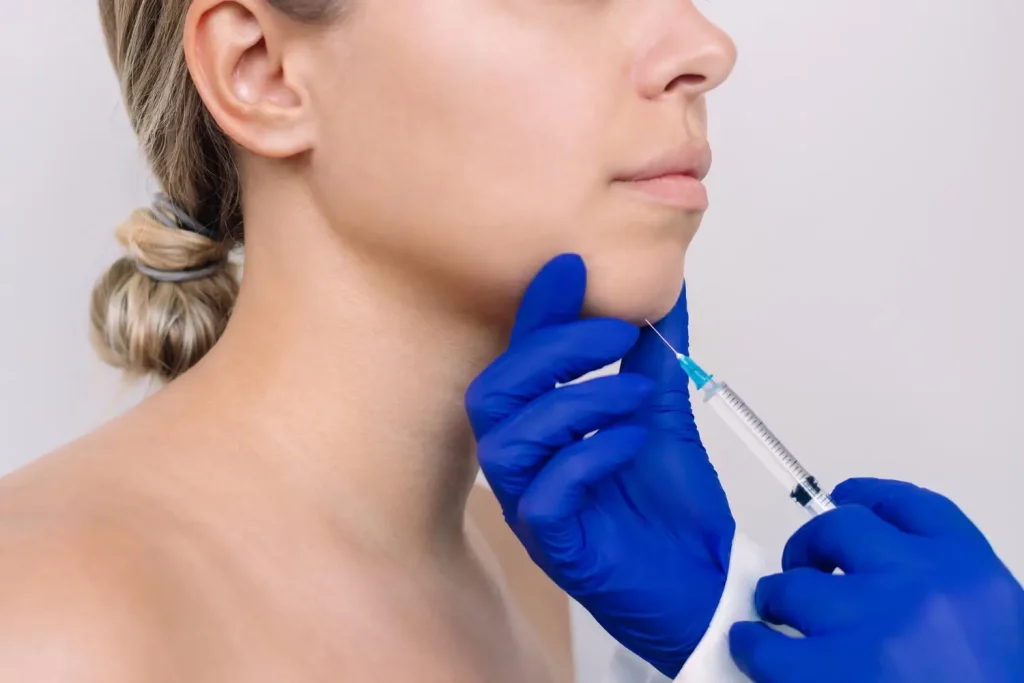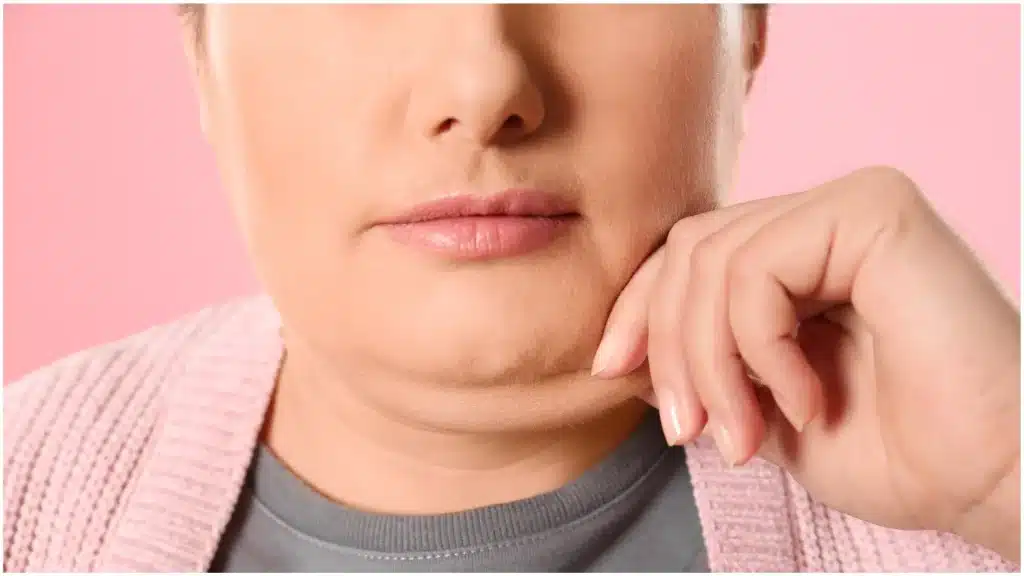Injectable cosmetic treatments have surged in popularity because they can rejuvenate the skin and restore a youthful appearance without surgery. However, like any cosmetic procedure, injectable treatments do carry some potential side effects. While the most common issues, such as temporary swelling and bruising, are mild and manageable, injectable treatments can occasionally lead to more serious complications.
Nucleofill, a popular injectable, uses polynucleotides to naturally boost collagen production and enhance skin hydration. Known for its anti-aging and skin-repairing benefits, Nucleofill is generally well-tolerated but can still produce mild side effects in some patients.
In this article, we’ll explore a comprehensive list of potential side effects associated with Nucleofill, what to expect post-treatment, and tips for managing any symptoms that may arise.
Key Takeaways
- Common side effects of Nucleofill include mild redness, swelling, and bruising at the injection site, which generally resolve within a few days.
- Uncommon side effects, like allergic reactions, infection, or nodules under the skin, are possible but occur infrequently. Monitoring for any unusual symptoms after treatment is advised.
- Severe side effects, including anaphylaxis, tissue necrosis, or filler migration, are exceptionally rare but require immediate medical attention if they occur.
- Following aftercare instructions, such as applying a cold compress and avoiding direct sun exposure, helps minimize side effects and supports a smooth recovery.
About: Medical Spa RX provides medical practices with premium products at the best prices. If you’re looking to order Nucleofill online for your practice, the sales representatives at Medical Spa RX can give you guidance.
Introduction to Nucleofill
Nucleofill is a cosmetic injectable treatment designed to rejuvenate the skin by stimulating natural collagen production and boosting hydration. Unlike traditional fillers that simply add volume, Nucleofill uses polynucleotides to improve skin health from within, making it firmer, smoother, and more resilient over time.
The primary benefits of Nucleofill include improved skin elasticity, hydration, and a reduction in fine lines, giving the skin a naturally refreshed look.
When comparing popular treatments like Nucleofill vs Rejuran, both focus on skin regeneration. Nucleofill emphasizes deep hydration and volume, while Rejuran is more targeted at repairing skin texture and elasticity.
Common Side Effects of Nucleofill
- Temporary Redness and Swelling at the Injection Site: This mild reaction is a natural part of the body’s response to the treatment and generally subsides within a few days.
- Mild Discomfort or Tenderness: Some patients may also feel slight tenderness or discomfort in the treated areas, especially when touching the skin. This sensation is typically mild and fades quickly.
- Bruising and Itching: While bruising is fairly common, itching is less so, and both effects usually resolve on their own within a few days without needing special care.
Rare Side Effects of Nucleofill
- Allergic Reactions such as Hives or Rash: Although allergic reactions like hives or rash are less familiar with Nucleofill treatments, they can happen. These reactions show up as red, bumpy patches on the skin, which might itch a lot.
- Infection at the Injection Site: Signs of infection include increased redness, warmth, swelling, and pain in the treated area. If these symptoms appear, patients should consult their provider promptly.
- Nodule Formation or Lumps Under the Skin: Occasionally, small nodules or lumps may form under the skin where Nucleofill is injected. While uncommon, these hard spots indicate a reaction in the skin and may require professional attention to manage.
Serious Side Effects of Nucleofill
Though very rare, serious side effects from Nucleofill treatments can occur and should be addressed promptly.
- Severe Allergic Reactions (Anaphylaxis): Severe allergic reactions, or anaphylaxis, may happen in exceptional cases. Symptoms include difficulty breathing, swelling of the face or throat, and a rapid heartbeat.
- Tissue Necrosis or Skin Ulceration: Tissue necrosis or skin ulceration is another rare but serious complication. It arises when blood flow is reduced, leading to damage and potential tissue death. Symptoms may include pain, discoloration, and sores in the treated area.
- Migration of the Filler to Other Areas: Migration can cause the filler to shift to unintended areas or closer to the skin’s surface, requiring careful monitoring by a healthcare provider.
Managing Nucleofill Side Effects
To help reduce common side effects like swelling, redness, and bruising after Nucleofill, gently apply a cold compress to the treated area. Keeping your head elevated can also help with swelling. For the first 24 hours, avoid activities that generate heat—like strenuous exercise, hot baths, or saunas—as these can increase inflammation.
If you notice signs of an allergic reaction, such as hives, rash, or unusual pain around the injection site, contact your healthcare provider right away. It’s also important to watch for symptoms of infection, like increased redness, warmth, or prolonged swelling, and seek prompt medical attention if they occur.
Following aftercare instructions closely supports a smoother recovery. Your provider may recommend using cold packs, avoiding direct pressure on the treated area, and protecting your skin from the sun. Regular follow-up appointments can help monitor your progress and address any questions, ensuring the best possible results.
Conclusion
Nucleofill treatments can come with some side effects, such as swelling and redness, and in rare cases, allergic reactions. If any symptoms seem serious, it’s important to contact a doctor. Most side effects are mild and resolve on their own fairly quickly.
Following aftercare tips can help ensure a smooth recovery and the best possible results.
FAQs
1. What are the most common side effects of Nucleofill?
Common side effects include temporary redness, swelling, and mild bruising at the injection site, which generally subside within a few days.
2. How can I minimize side effects after Nucleofill treatment?
Applying a cold compress, avoiding intense physical activity, and keeping the treated area elevated can help reduce swelling and discomfort.
3. Should I be concerned about allergic reactions to Nucleofill?
Allergic reactions to Nucleofill are rare, but if you notice hives, swelling, or difficulty breathing, contact a healthcare provider immediately, as this could indicate an allergic reaction.
4. Can filler migration happen with Nucleofill, and what are the signs?
Although very rare, filler migration can occur. Signs may include visible lumps or changes in the treated area’s contour. If you notice any unexpected shifts, consult your doctor for advice.
References
Wang C, Sun T, Li H, Li Z, Wang X. Hypersensitivity caused by cosmetic injection: systematic review and case report. Aesthetic Plastic Surgery. 2020;45(1):263-272. doi:10.1007/s00266-020-01684-4
Reports and Data. (n.d.). Aesthetic medicine market. Retrieved October 25, 2024, from https://www.reportsanddata.com/report-detail/aesthetic-medicine-market





















